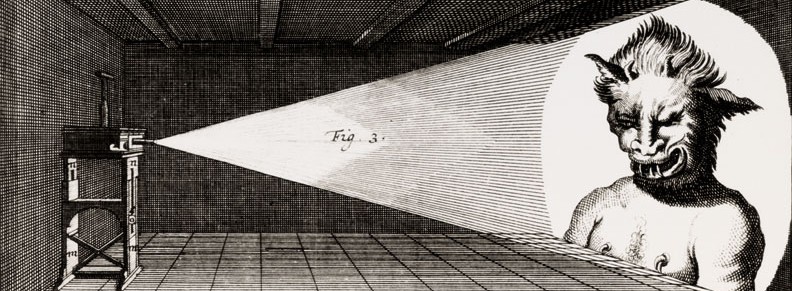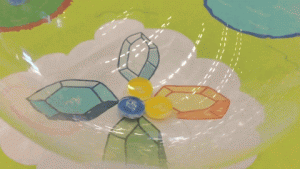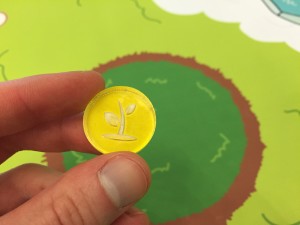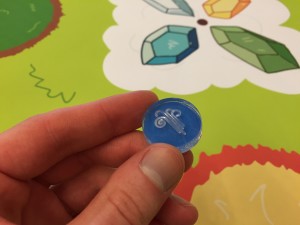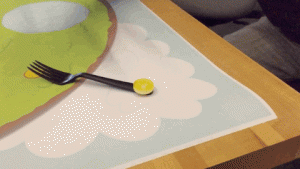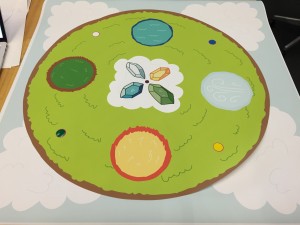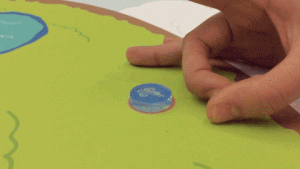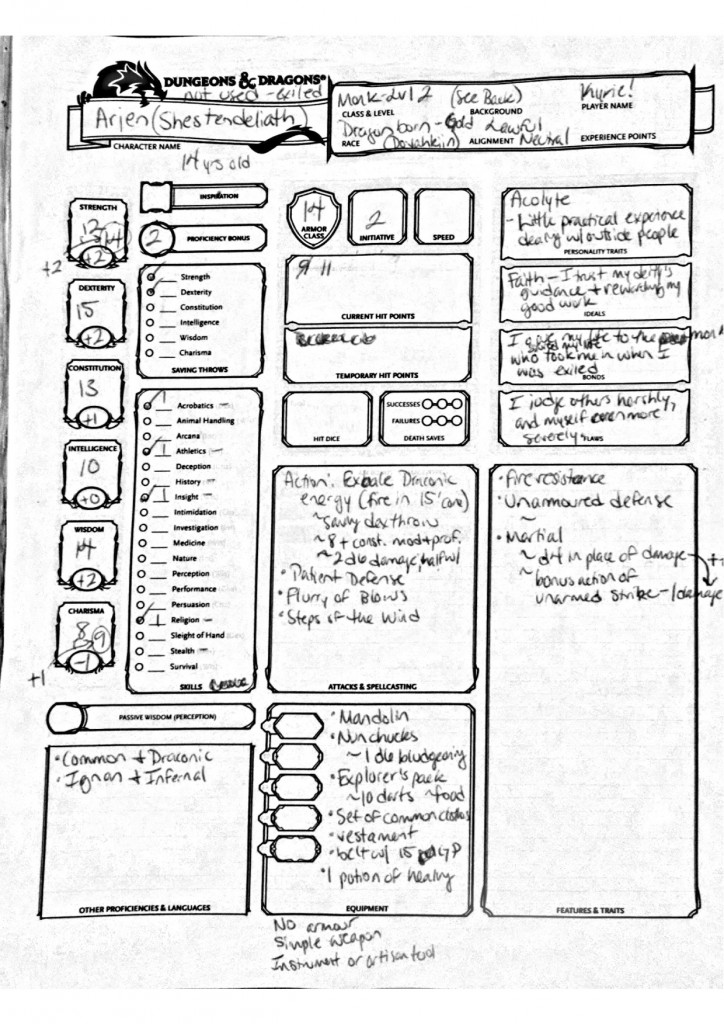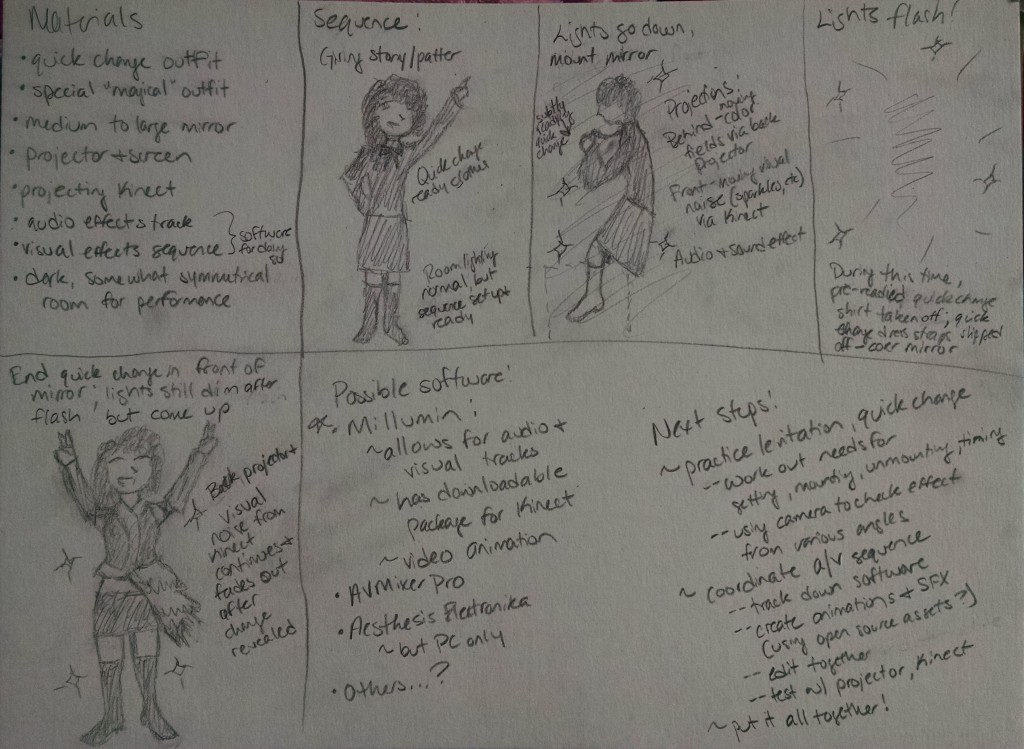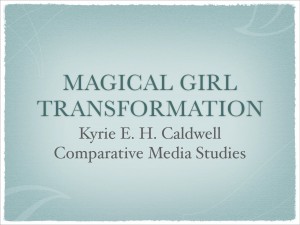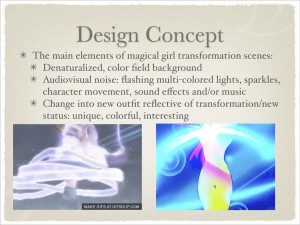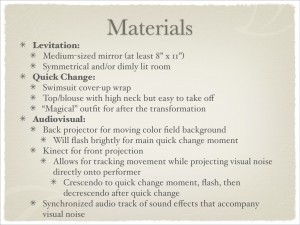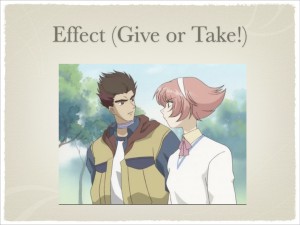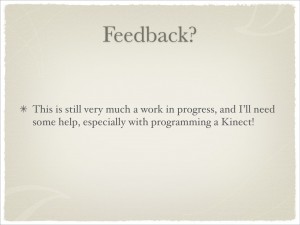Note: this assignment will provide you with a series of writing prompts as it goes. Please, combine all of those into a blog post and post it here on the blog when you’re done. If you’re confused about any of the steps here, don’t hesitate to get in touch. Have fun!
“You are sitting in a tavern. You look down and see a D&D homework assignment on the table…”
Hello and welcome to the D&D homework assignment.
In this assignment you’re going to learn about how role playing games depict characters and events in magical worlds using numbers. You’re going to conduct a series of exercises meant to give you a sense for how these kinds of games use numbers to make the fantasy they depict feel real for the player. Specifically, you’re going to roll a few D&D characters.
If you’ve never played D&D (or any other role playing game) before that’s no problem. This assignment will walk you through everything you need to do. If you’ve played D&D before, that’s great. Still go through these exercises while thinking specifically about how the game is depicting the story world using its numerical systems.
An Example of Play
First, though, let’s start by reading this short description of play from Advanced Dungeons and Dragons 2nd Edition.
Notice how play chiefly proceeds in the form of an interactive story. The DM sets the scene, the players make choices, and the DM figures out how those choices affect the world and what the outcomes are. Sometimes in the process of doing this the DM checks various “scores” belonging to the players’ characters or rolls dice.
Question: How would you characterize the moments in this account in which stats are referenced or dice are rolled? What is happening in these moments? How do they differ from the rest of the account? How do they differ from each other (that is, how are the stats lookups different from the dice rolls)?
The dice are rolled and the stats are referenced when there is a specific question to be answered regarding the storyline and the characters ability to manipulate some part of it. For questions of capabilities (“can I do x”) usually there is a relevant stat that can guide the answer to the question. For scenarios where a major plot point is being decided, chance is used to determine the branching of the storyline, such as when the players were looking for a secret door.
Creating Your First Character
Ok! Now that you have a basic sense of what playing D&D should look like let’s start moving you towards being ready to play.
Start by downloading these two documents you’ll need for this process:
Character Sheet
5th Edition D&D Player’s Handbook
Print out the character sheet or open it in a PDF editor that will allow you to fill in the form.
The first place we’re going to focus is your character’s attributes. Those are listed along the left side of the character sheet and they are (definitions courtesy of wikipedia):
- Strength is the ability of an animal or human to exert force on physical objects using muscles
- Dexterity is the coordination of small muscle movements—usually involving the synchronization of hands and fingers—with the eyes. Fine motor skills.
- Constitution is a general state of health and well-being and, more specifically, the ability to perform aspects of sports or occupations. High constitution is generally achieved through correct nutrition, exercise, hygiene and rest.
- Intelligence the ability to perceive and/or retain knowledge or information and apply it to itself or other instances of knowledge or information creating models about the world. Related to capacity for logic, abstract thought, understanding, self-awareness, communication, learning, emotional knowledge, memory, planning, creativity and problem solving.
- Wisdom is the ability to think and act using knowledge, experience, understanding, common sense, and insight.
- Charisma compelling attractiveness or charm that can inspire devotion in others.
The characters we create are going to start off with scores for each of these attributes. The scores will range from three to 18. Typically these scores are created by rolling dice (usually three or four six-sided die depending on the specific version of the game referred to as 3d6 or 4d6, respectively).
A higher score means more ability in that attribute. A character with a higher strength score is stronger, one with a higher constitution is in better shape, etc. If you want to get a vivid sense for what a particular score might mean in practice read this:
D&D Stats in Simple Language (don’t worry about the modifiers and other technical details in there; for now just pay attention to the descriptions and try to imagine a real person with those qualities).
You can think of your character’s attribute as their heritable traits. Your attributes are what you’re born with. Everything else gets built on top of them.
For your very first character, you’re going to use a set of numbers I came up with. These are special magical numbers. They are:
16, 6, 11, 9, 14, 12
Assign each one of these numbers to one of the six character attributes.
Imagine what kind of person you’ve just created based on these attributes. What personality is created by combining these attributes? Do you know anyone in real life who matches this mix of characteristics? How would you describe someone like this to a friend? What jobs would they thrive in? What are some situations in which they’d be really out of place?
Strength-16
Dex – 6
Const – 11
Intel – 9
Wisdom – 14
Charisma – 12
Josh is a cool guy. He was sorta born to be a JV lineman, if that makes any sense. He can take a few hits before being knocked out and he’s a pretty big guy, but can’t really stand up to the real football lifers for long. I’m not sure if he’s been hit in the head a bit too much, but he has a hard time remembering names and doesn’t do well in school. But he has impressive moments of insight and clarity into social problems and is trusted on the team as a bit of a life advisor. But outside of contexts like that he’s pretty ordinary socially. He can hold a conversation.
Now move the numbers around and do this again. Try to create a character who’s very different from your first character without just being the exact inverse.
Str – 11
Dex – 9
Const – 14
Intel -12
Wis – 16
Char – 6
Jon is a strange dude. When you meet him or try to have a conversation with him he alternately comes off as rude or just antisocial. He probably hasn’t been the cool kid in school because he’s a small guy, clumsy, not athletic. But every so often, maybe because he’s so unattuned socially, he’s able to cut through the crap in a situation and know whats right. And when he is really dedicated to something, he really gets into it. He worked on renovating his room last summer all day every day for a week.
Would your two characters get along? How would they interact? If they were on a team would they complement each other? Would they be able to collaborate?
I don’t think these characters would get along or collaborate well. Jon doesn’t work well with people in general, and Josh is unassuming and a bit naive, which makes Jon even more rude. They complement each other physically, but even together they’re no great shakes in terms of cleverness or toughness. They wouldn’t be friends.
Pick one of these two characters that you’d like to proceed with through the next stages (or heck do all the stages for both, it really won’t take long).
Character Classes: Give Your Character a Job
Now that you know your character’s attributes, the next step is to give them a “Character Class”. This is the D&D term for what is basically your profession. So far as things like “entering a battle rage” or being “bound to a sacred oath” can be a profession.
Take a look at Chapter 3 of the Player’s Handbook. On page 39 it lists the 12 character classes included in 5th edition D&D along with a short description of each (don’t worry about the other columns for now; in fact ignore them, they are wrong and evil). The rest of that chapter also includes more details about those classes if you want to read up on them.
Now, the traditional way to pick a class is to match it to your characters best attributes. High strength score? You’re a Fighter or a Barbarian? High dexterity? You’re a Rogue. This is what shows up under the “Primary Ability” column in that table. But, to this, I say: bah! This method of coming up with characters is both boring and highly unrealistic. Is everyone you’ve ever met perfectly well-suited to their job? Do they each have exactly the traits you’d hope for in their given line-of-work and no mismatches? Have you ever had a stupid or uncharismatic teacher? Seen a musician who really believed in themselves and meant well but had no talent? Heard of a police officer or soldier who was weak or naive? Of course, these kinds of “contradictions” happen all the time.
In addition to missing most of the complexity of life, the traditional way of creating characters also makes for boring and predictable role playing. Some of the most fun characters to play are the ones whose attributes are surprising mismatches for their classes. Imagine a Rogue with low dexterity and charisma, but high intelligence and wisdom. Maybe they grew up in desperate circumstances and so even though they weren’t cut out to be a criminal they had to use their wits and street smarts to survive and so became a hustler and con artist instead of a sneak thief. Or imagine a Wizard with incredibly low wisdom and intelligence but very high charisma and dexterity. What if they actually can’t use magic, but convince people around them they can by sheer force of personality and a lot of skill at sleight of hand? Sound like anyone we know?
Notice how these combinations of attributes and classes got me started telling a story. I’m immediately imagining a bit of the character’s background, personality, and the kinds of actions they might take. This is exactly what we want to happen during the character creation process. It should start to develop its own momentum, as if you were staring to describe a real interesting person. Each choice you make should fit in with what you already know about your character, making them more well-rounded. You should feel free to make creative choices, but also constrained by the choices you’ve already made, compelled to come up with a story that makes your new choices feel consistent with your previous ones.
Select a class for your character. While considering options try imagining a person with your character’s attributes in each of the 12 classes. How would they have ended up doing that job? How would they make it work even if it might seem wildly inappropriate on the surface?
Josh is a Ranger. He isn’t ideally suited to be ranger, he could do with a bit more intelligence and hand-eye coordination. His strength occasionally gives him an advantage, and his willingness to work with other people. He is very kindhearted, and doesn’t like the long separations from other people required of his lifestyle, but he deals with it. He was pressured into leaving his childhood home by his parents at the age of 14, who wanted him to see more of the world and leave the small town they’d lived in their entire lives. They were always partial to the Rangers so he chose that path without appreciating the ramifications.
Write down your character’s profession on your character sheet. Also write a short paragraph explaining how their profession matches up with their attributes. Are they good at it? Were they a natural who always knew this was what they wanted to do? Were they forced into it by circumstance? Was it the result of a weird religious calling? Did they have some other prior life or career before doing this? Make up anything you can to make a coherent story out of these two aspects of your character
Pick Your Race (Uh, Creepy)
Next comes one of the worst and one of the best parts of D&D’s character system. D&D’s Race system is, frankly, kind of gross. The idea that a person’s race tells you something about their character is a sign of the racist elements in the fantasy tradition before and around D&D. If you read Tolkein, it’s difficult to escape the conclusion that the tall pale people from the north are good and the dark ugly people from the south are bad. This reproduces the attitudes of the colonial era in which Tolkein came of age and its one of the worst aspects of his legacy (and that of many other contemporary and prior fantasy writers).
At its best, if you approach it from a very generous mindset, modern D&D tries to use the Race system to mean something more like cultural background than racial identity. You can soften the racism of deriving personality traits directly from a character’s race by imagining that these are generalized descriptions of the mainstream societal values of each of these (partially geographically distinct) races. Dwarves are good at building things not because of some essential genetic racial qualities, but because they are raised in a culture that values building and passes on a certain set of traditional practices around it.
If you read Chapter 2 of the Player’s Handbook, though, you’ll see they mean race in the more troubling sense I’m trying to avoid here. They list nine races:
- Dwarf
- Elf
- Halfling
- Human
- Dragonborn
- Gnome
- Half-Elf
- Half-Orc
- Tiefling
Like we did with the classes, I’m going to encourage you to take a more creative and interpretive approach to selecting your race than the official rules suggest.
Is your character highly intelligent but weak, somewhat unworldly? Consider making them a dwarf. What would it have been like to grow up as the one dwarf who loved books? How would being an outsider from that kind of culture shape your character’s personality? Did they always wish they could fit in? Or were they more of a rebel who grew to resent and hate the mainstream of their community’s culture?
Again, you don’t only have to go for straight contrast like this, just find something that you find makes an interesting story.
As you read through the race descriptions, try each one on for size. How would they fit with the character you’ve been building? What story would you make up to explain your character’s experience growing up within this culture? Maybe they were emigrants so they didn’t grow up amongst too many people of their kind. How would that change their attitudes to their race’s mainstream values? Would they romanticize them or be embarrassed of the traits that made them different from their surroundings?
Josh is a half-tiefling, half human, half, but he grew up among a small subset of the population that lives peacefully in an isolated environment. Josh’s half-tiefling body can only just pass fo a humans under heavy garments. He has been identified as tiefling before while wandering through human villages and been chased away by armed villagers. he has to be very careful around humans, and he’s become more and more cynical towards them over time, despite his good nature.
Write down your character’s race on your character sheet. Also write a short paragraph adding to your character’s growing biography to incorporate their race. Try to sketch the outlines of their relationship to the “mainstream” of their race community. Did they grow up traditionally for their race or not? What is their relationship to those traditions, positive or negative?
Alignment
Where D&D’s race system is somewhat yucky, its alignment system is awesome. Once you learn it you’ll find yourself applying to real people. The alignment system consists of two axes: one ethical and one moral.
The ethical axis ranges between lawful and chaotic. According to 3rd Edition, “Law implies honor, trustworthiness, obedience to authority, and reliability.” Whereas “chaos implies freedom, adaptability, and flexibility.” The moral axis ranges between good and evil, “Good implies altruism, respect for life, and a concern for the dignity of sentient beings.” Whereas “Evil implies harming, oppressing, and killing others.”
Combining these two into a 3×3 grid yields the following possibilities:
Good Neutral Evil
Lawful Harry Potter Dumbledore Malfoy
(True) Seamus Cho Chang
Chaotic Aberforth Ollivander Voldemort
Try to think of one or two examples of well-known historical, public, or fictional figures who match each category.
Write down the examples of each category that you came up with. It will be interesting to see how much we as a class overlap here. Can you come up with a realistic example for Chaotic Evil? It’s probably the hardest one…
Now select an alignment for your character. As should be familiar by now, start by exploring each option and imagining how you’d incorporate it into the existing portrait you’ve been building for your character. What stories can you come up with to make them make sense? Are there any alignments that seem to match particularly well with your character’s attributes, class, and relationship to their race?
Josh is Chaotic Good because he is inherently good natured but needs to be free of commitment because of his lifestyle.
Write down you character’s alignment on your character sheet and write a short paragraph explaining how that alignment fits into their wider biography.
Fill in the Details
You’ve basically completed the important parts of character creation from the role playing and storytelling perspective. You should have a pretty good sense of who your character is at this point. But there’s still a lot to fill in, particularly as it relates to wrapping the storytelling choices you’ve made with all of the numbers that are necessary to make your character playable within the systems of D&D.
If you look at your character sheet you’ll notice we’ve filled in nearly none of it. You’ve written all this great back story about your character, but haven’t filled in much of this sheet at all. Now’s the time to do that.
Rather than reproducing the instructions from the Player’s Handbook here, I’m just going to send you there to fill in the rest of the details. Refer to the sections of the manual that are relevant to your class and race in particular to see lots of the numbers that you need. If you’re a magic user (Cleric, Sorcerer, Warlock, or Wizard) you’ll also need to choose spells from the appropriate section of Part 3 of the Player’s Handbook.
You’ll also need to select some basic gear for your character (see Chapter 5).
Note: many of the steps in the Player’s Handbook will call for dice rolling. If you see an attribute listed as, for example, the Druid is listed as having “Hit Dice: 1d8 per Druid level”, that means you need to generate a random number between 1 and 8. If you already have access to an 8-sided die you probably don’t need me to explain this to you. If not, feel free to use any programming language or computational tool of choice. Or, for efficiency, Wizards of the Coast’s online dice roller.
As you go through each of these steps try as much as you can to root your decisions in your understanding of who your character is.
Notice how the Handbook uses numbers to represent the differences between parts of its world. It tells you to add and subtract from various character attributes when you select a class and a race. What are those changes meant to represent? Do they match the story you’re telling about your character or do they water it down?
Write down one or two examples of these kinds of numerical changes the Handbook suggested that struck you as a particularly bad match for the character you were trying to create. Document them and then don’t do them! Don’t let the Handbook push you into stereotype. Its purpose is to translate the character you want to play into numbers that let that character interact in a structured way with other elements and characters in the shared world. It’s just a starting point.
And, finally, don’t forget to give your character a name.
Once you’ve completed your character, post their attributes, class, race, and what you’ve written about them to the class blog. As a bonus, also include your completed character sheet if you’d like with your items, spells, etc.
Fill out the rest of your character sheet using the instructions in the Player Handbook. If you are confused about any of the steps don’t hesitate to ask your classmates, search the Internet, slack us, email us, or otherwise get in touch.
Create Some More Characters
Since I spent almost 3000 words explaining how you should create a character the first time, you’re probably not eager to go through it all again. But what follows are a series of exercises to create stubs for characters. They’re meant to help you to gain more experience with how D&D’s systems represent various characteristics of people. You can do each of these relatively quickly, just writing down a quick set of numbers, a class, a race, and a couple sentence biographical sketch for each (where appropriate).
Roll a random character using D&D’s suggested method. For each character attribute, roll 4d6 (a six-sided die four times) and discard the lowest die. Add the other three together to produce the attribute score. Once you’ve filled in all six attributes, select a class, race, and alignment, building a story about your character as you go.
How was this process different from creating your main character before? How did the different distribution of the numbers you got for attributes change the process of coming up with the character’s story.
Write down your character’s attributes, class, race, alignment, and background sketch. Also write down some notes about how this time was different from last time. Was it easier or harder to come up with a story? Why?
Now pick two people from the following list:
- Sailor Moon
- Ron Weasley
- Lady Gaga
- Starlord from Guardians of the Galaxy
- Genghis Khan
- Serena Williams
- Martin Luther King, Jr.
- Tina Fey
- The Bride (from Kill Bill)
- Neil Gershenfeld
- Wolverine
For each one that you pick, write down what you think their strength, charisma, wisdom, intelligence, dexterity, and constitutions scores are. What’s the closest class to what they do in real life? What race’s traditions or aesthetic matches them? What alignment are they?
Write down your answers so we can compare them with other people in the class who chose the same subjects.
